
Sir Kerry Burke
The Government’s 2010 dismissal of the elected ECan was based on two false premises:
1) That ECan was dysfunctional, a claim rejected by the Creech Inquiry; and
2) That ECan had failed to plan for water when, in fact, the water plan was proposed in 2004 and is the current operative plan.
Official documents obtained recently by “The Press” indicate that the elected ECan Council was destroyed by the present Government in 2010 because it was worried that the looming local elections might produce a Council which wouldn’t rubber stamp irrigators’ demands.
At the heart of the cocktail of agendas which conspired against ECan lay a Government fear that democratic control over Canterbury’s natural resources would inevitably give greater strength to urban opinions and less to National’s rural base, especially irrigators.
These fears were supported by mayoral plotting and duplicity, party politics and personal ambition inside the ECan Council. The conflation of these agendas destroyed, for the moment, Canterbury’s regional democracy.
Water:
Water is Canterbury’s greatest natural resource, eternally renewable but finite in any particular year. It must be managed sustainably. This is best done through the Regional Policy Statement (RPS) and the water chapters of the Natural Resources Regional Plan (NRRP), which provide the legal framework, policies and rules for water allocation and use.
The current operative RPS and NRRP water chapters were developed and proposed by the former elected ECan Council, reflecting the views of Canterbury’s population over their natural resources in earlier local elections through the ballot box.
These documents must be reviewed every ten years. The Government’s fear was that there was a strong chance that the 2010 local elections could produce an ECan Council more balanced between economic and environmental interests than hitherto and which might have developed policy and plan changes which reflected that balance.
It set about constructing a case for the dismissal of the elected ECan Council.
The Government’s attacks on ECan began in 2009 over consenting timeline failures in the 2007 – 08 year, though their causes had been remedied by 2009. They then moved on to the claim that the Council was dysfunctional, an assertion firmly rejected by the Creech Inquiry in late 2009, though still advanced by Ministers to this day.

Finally, the attacks on ECan turned to claims of a failure to plan for water. This claim was also false but, when Councillors met former Ministers Smith and Hide in late 2009 Smith advised them that the only issue concerning the Government was water. How could this be?
The Water Chapter of the RPS became operative in 1998 and the five water-based chapters of the NRRP* were proposed for public submission in July 2004, six years before Minister Smith claimed that ECan councillors were sacked for not producing a plan.
Embarrassingly for Smith, one of his appointed Commissioners, Peter Skelton, soon confirmed that despite a ‘widespread misunderstanding’ that there had been no plan, in fact there was one, developed and proposed in mid-2004 by the former elected members.
Five former councillors** and an external Commissioner were appointed to two Hearing Panels, which began their work in 2006, completing their decision making just prior to what would have been the 2010 elections. Between their proposal in 2004 and the final decisions in 2010, the water chapters were in a statutory submission and Hearing process, beyond the interference of ECan’s Council of elected members.
So Government claims that ECan’s elected members had failed to produce a water plan, as with its claims of ECan dysfunctionality, were false, designed to obscure the real agenda.
The only thing former Minister Smith did to speed up the plan process was to remove the rights of parties to appeal to the Environment Court, which could have been done without removing the architects of the (now operative) plan, the elected councillors.
So, why was water such a factor in the Government’s fear of the 2010 ECan elections?
The 2004 and 2007 local elections saw the ECan Council move from being rurally dominated to one which better reflected Canterbury’s mix of population and interests. It was more balanced in its make-up and in its budgeting and policy decision making.
In 2007 four new councillors were elected after campaigning on water issues: Eugenie Sage in Selwyn/Banks Peninsula, Jane Demeter in Christchurch North and David Sutherland and Rik Tindall in Christchurch East. These results sent shockwaves through the political and farming establishments.
Much of their campaign efforts targeted the concerns of city residents to protect Christchurch’s famous pure water quality and that of rural communities in the Selwyn District, especially fears about the possible effect of the Central Plains Water (CPW) irrigation scheme on their domestic water resources.
*water quality, water quantity, wetlands, the beds of lakes and rivers and the impact of water use on soils
** Robert Johnston, Bob Kirk, Mark Oldfield, Ann Carroll and Bill Woods.
The Water Chapter of the RPS became operative in 1998 and the five water-based chapters of the NRRP* were proposed for public submission in July 2004, six years before Minister Smith claimed that ECan councillors were sacked for not producing a plan.
Embarrassingly for Smith, one of his appointed Commissioners, Peter Skelton, soon confirmed that despite a ‘widespread misunderstanding’ that there had been no plan, in fact there was one, developed and proposed in mid-2004 by the former elected members.
Five former councillors** and an external Commissioner were appointed to two Hearing Panels, which began their work in 2006, completing their decision making just prior to what would have been the 2010 elections. Between their proposal in 2004 and the final decisions in 2010, the water chapters were in a statutory submission and Hearing process, beyond the interference of ECan’s Council of elected members.
So Government claims that ECan’s elected members had failed to produce a water plan, as with its claims of ECan dysfunctionality, were false, designed to obscure the real agenda.
The only thing former Minister Smith did to speed up the plan process was to remove the rights of parties to appeal to the Environment Court, which could have been done without removing the architects of the (now operative) plan, the elected councillors.
So, why was water such a factor in the Government’s fear of the 2010 ECan elections?
The 2004 and 2007 local elections saw the ECan Council move from being rurally dominated to one which better reflected Canterbury’s mix of population and interests. It was more balanced in its make-up and in its budgeting and policy decision making.
In 2007 four new councillors were elected after campaigning on water issues: Eugenie Sage in Selwyn/Banks Peninsula, Jane Demeter in Christchurch North and David Sutherland and Rik Tindall in Christchurch East. These results sent shockwaves through the political and farming establishments.
Much of their campaign efforts targeted the concerns of city residents to protect Christchurch’s famous pure water quality and that of rural communities in the Selwyn District, especially fears about the possible effect of the Central Plains Water (CPW) irrigation scheme on their domestic water resources.
*water quality, water quantity, wetlands, the beds of lakes and rivers and the impact of water use on soils
** Robert Johnston, Bob Kirk, Mark Oldfield, Ann Carroll and Bill Woods.
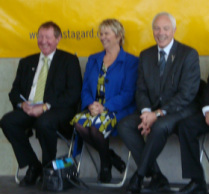
Water was planted firmly in the centre of regional politics, which worried more than a few people, particularly those wanting to maximise private benefit from this public resource.
These worries were exemplified by the response from the Agriculture Minister and rural mayors to ECan’s 2009 proposal to change the Waimakariri River Plan.
ECan was required to review the plan by the Environment Court, while the CPW Hearing Commissioners also sought ECan’s current thinking. It resulted in a proposed flow regime which, while being healthier for the river, would have still allowed CPW to proceed if it received its consents.
There was no need for ministers, mayors or farmers to be worried on the basis of the facts, but they were. They saw it as a harbinger of a more environmentally-friendly future elected ECan Council, one more difficult for their beloved irrigators. They reacted very badly.
Ultimately, the CPW Panel ignored the thrust of the new ECan proposal, but the hint that ECan might be tougher on irrigation in the future was enough to cause the Agriculture Minister to make his displeasure known to me at a Mayoral Forum dinner in mid-2009. His attitude had changed since taking office a few months earlier.
Soon after the 2008 elections, Carter extolled the virtues of democracy telling an irrigators’ gathering in Christchurch in December 2008, attended by me as ECan Chair, that “the one thing you need to understand is that you must take the urban community with you.”
By April 2010, as the elected ECan Council was about to be abolished, the Minister’s view had turned 180 degrees. He threatened all regional councils in a speech to the Irrigation NZ Conference, where he stated:
“We had to act (re ECan) because the situation was untenable if we are to seriously make progress in delivering this irrigation.
“I would have though what happened recently (re ECan) would be a signal to all regional councillors to work a bit more constructively with their farmer stakeholders.”
Irrigation as an economic driver now took precedence over farmers needing to make their case to and win the support of the (majority) urban community. ECan, the democratically elected regional resource manager, was in the way.
The Government could not risk a 2010 ECan election if it wanted to control Canterbury’s water resource in a way that favoured irrigators’ interests over balanced environmental considerations. It set about the constructive dismissal of the elected ECan Council.
These worries were exemplified by the response from the Agriculture Minister and rural mayors to ECan’s 2009 proposal to change the Waimakariri River Plan.
ECan was required to review the plan by the Environment Court, while the CPW Hearing Commissioners also sought ECan’s current thinking. It resulted in a proposed flow regime which, while being healthier for the river, would have still allowed CPW to proceed if it received its consents.
There was no need for ministers, mayors or farmers to be worried on the basis of the facts, but they were. They saw it as a harbinger of a more environmentally-friendly future elected ECan Council, one more difficult for their beloved irrigators. They reacted very badly.
Ultimately, the CPW Panel ignored the thrust of the new ECan proposal, but the hint that ECan might be tougher on irrigation in the future was enough to cause the Agriculture Minister to make his displeasure known to me at a Mayoral Forum dinner in mid-2009. His attitude had changed since taking office a few months earlier.
Soon after the 2008 elections, Carter extolled the virtues of democracy telling an irrigators’ gathering in Christchurch in December 2008, attended by me as ECan Chair, that “the one thing you need to understand is that you must take the urban community with you.”
By April 2010, as the elected ECan Council was about to be abolished, the Minister’s view had turned 180 degrees. He threatened all regional councils in a speech to the Irrigation NZ Conference, where he stated:
“We had to act (re ECan) because the situation was untenable if we are to seriously make progress in delivering this irrigation.
“I would have though what happened recently (re ECan) would be a signal to all regional councillors to work a bit more constructively with their farmer stakeholders.”
Irrigation as an economic driver now took precedence over farmers needing to make their case to and win the support of the (majority) urban community. ECan, the democratically elected regional resource manager, was in the way.
The Government could not risk a 2010 ECan election if it wanted to control Canterbury’s water resource in a way that favoured irrigators’ interests over balanced environmental considerations. It set about the constructive dismissal of the elected ECan Council.

Representation:
While the Government’s fears about water policy from a post-2010 ECan drove its decisions to sack the elected Council, it was the issue of representation which it and Canterbury’s rural mayors were really worried about in the longer term.
Democratic representation dictates who holds office and who sets the policy framework for the management and allocation of a region’s natural resources such as water.
Doug Low, the Creech Inquiry team member who interviewed me in late 2009, put his pen down mid-discussion and said: You know, representation is the key to all of this.”
This was a remarkable but accurate observation, as representation – the basis upon which constituencies are drawn and members elected - translates inexorably into influence in a council’s policy and decision making.
Historically, ECan’s representation arrangements were tilted in favour of rural interests compared with their urban colleagues, who provided most of the general rates which funded ECan’s core services.
By 2004 rural ECan councillors represented an average of 27,000 people compared with more than 40,000 per councillor from Christchurch. It was undemocratic, plain and simple.
The 2001 Local Electoral Act (LEA), however, required change, with the principle of ‘fairness’ to be applied and for each councillor to represent no greater variation than +/- 10% of the regional population average, save for exceptional circumstances.
The application of this democratic principle in ECan’s 2007 representation review saw Canterbury’s mayors united in defence of rural interests. Led by (now defeated) Ashburton Mayor O’Malley, they simply refused to accept what the Act plainly stated.
All of them had reviewed their own city and district electoral arrangements in compliance with the +/-10% ‘fairness’ principle yet they all claimed that, for ECan, the rule didn’t apply.
Their stance was supported, astonishingly, by the Christchurch City Council, even though it meant continued over-taxation and under-representation for its citizens.
The mayors’ oral submission to the Local Government Commission had barely begun when the Chair intervened to tell Mayor O’Malley that his case wasn’t supported by the law.
It was a humiliating rebuke for O’Malley and resulted in him and the mayors who followed him floundering their way through the remainder of their submissions. Mayor McEvedy of Selwyn, presciently perhaps, threatened that if the mayors’ view was not upheld he wouldn’t rule out changes to Canterbury’s local government arrangements.
While the Government’s fears about water policy from a post-2010 ECan drove its decisions to sack the elected Council, it was the issue of representation which it and Canterbury’s rural mayors were really worried about in the longer term.
Democratic representation dictates who holds office and who sets the policy framework for the management and allocation of a region’s natural resources such as water.
Doug Low, the Creech Inquiry team member who interviewed me in late 2009, put his pen down mid-discussion and said: You know, representation is the key to all of this.”
This was a remarkable but accurate observation, as representation – the basis upon which constituencies are drawn and members elected - translates inexorably into influence in a council’s policy and decision making.
Historically, ECan’s representation arrangements were tilted in favour of rural interests compared with their urban colleagues, who provided most of the general rates which funded ECan’s core services.
By 2004 rural ECan councillors represented an average of 27,000 people compared with more than 40,000 per councillor from Christchurch. It was undemocratic, plain and simple.
The 2001 Local Electoral Act (LEA), however, required change, with the principle of ‘fairness’ to be applied and for each councillor to represent no greater variation than +/- 10% of the regional population average, save for exceptional circumstances.
The application of this democratic principle in ECan’s 2007 representation review saw Canterbury’s mayors united in defence of rural interests. Led by (now defeated) Ashburton Mayor O’Malley, they simply refused to accept what the Act plainly stated.
All of them had reviewed their own city and district electoral arrangements in compliance with the +/-10% ‘fairness’ principle yet they all claimed that, for ECan, the rule didn’t apply.
Their stance was supported, astonishingly, by the Christchurch City Council, even though it meant continued over-taxation and under-representation for its citizens.
The mayors’ oral submission to the Local Government Commission had barely begun when the Chair intervened to tell Mayor O’Malley that his case wasn’t supported by the law.
It was a humiliating rebuke for O’Malley and resulted in him and the mayors who followed him floundering their way through the remainder of their submissions. Mayor McEvedy of Selwyn, presciently perhaps, threatened that if the mayors’ view was not upheld he wouldn’t rule out changes to Canterbury’s local government arrangements.
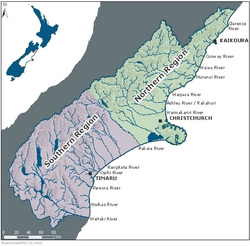
ECan’s proposed changes were quite small, incorporating what became known as a ‘fuzzy edge’ to Christchurch, placing parts of the city’s edges into neighbouring rural constituencies so that councillors, like MP’s, would represent, broadly speaking, similar numbers of constituents.
Importantly, they also fully honoured an agreement between me and my former Deputy Robert Johnston to retain a broad 8/6 split between urban and rural representation, insofar as that was possible.
Johnston, an Ashley Gorge farmer and former high regional office holder in the National Party, chaired ECan’s representation review process. He succeeded in meeting the terms of the law while retaining the integrity of our agreement, refusing to be bullied on this and other issues by rural colleagues pursuing what seemed to be a partisan political agenda.
The Commission upheld the law rather than mayoral prejudices. It endorsed the ‘fuzzy edge’ concept, producing a slightly more democratic set of boundaries for the 2007 election.
The changes, though quite small, signalled an end to mayoral diktat with regard to ECan.
It was the mayors’ first failure in 18 years to get their own way. An important precedent had been established. The mayors were not happy.
The loss of their ability to bully ECan, a council with its own distinct electoral mandate and superior planning authority, became a big driver in their 2009 lobbying to destroy it.
Water was the prime resource the rural mayors wanted to influence ECan’s control over at the time and fair representation arrangements, where every vote across Canterbury was of approximately equal value, were likely to make that increasingly difficult in future.
Water may be odourless and colourless but many people could smell the dollars if they could get access to it. Land values increased many-fold with consents to take water. Better still, if farmers could get more allocated than they actually needed, they could ‘sell’ the surplus to a neighbour for a small fortune. Many did.
The water chapters of the plan were developed from the late 1990’s and proposed in 2004, but the lengthy RMA submission and Hearing process meant that ECan had to manage the ‘gold rush’ of consent applications seeking access to water before its plan became operative and before all the sustainable water was allocated.
In a Canterbury economy already booming, water consent applications turned into a feeding frenzy, just like the gold, oil and other resource ‘rushes’ of the past across the World. The RMA priority system – first in, first served – exacerbated the ‘rush’ mentality.
Pleas to Environment Ministers (Labour’s Trevor Mallard and National’s Nick Smith) to give ECan powers to impose targeted moratoria, later granted by Smith to the appointed commissioners, were rejected. Denied a key tool to do the job, ECan was then blamed by Smith for its alleged failures.
Importantly, they also fully honoured an agreement between me and my former Deputy Robert Johnston to retain a broad 8/6 split between urban and rural representation, insofar as that was possible.
Johnston, an Ashley Gorge farmer and former high regional office holder in the National Party, chaired ECan’s representation review process. He succeeded in meeting the terms of the law while retaining the integrity of our agreement, refusing to be bullied on this and other issues by rural colleagues pursuing what seemed to be a partisan political agenda.
The Commission upheld the law rather than mayoral prejudices. It endorsed the ‘fuzzy edge’ concept, producing a slightly more democratic set of boundaries for the 2007 election.
The changes, though quite small, signalled an end to mayoral diktat with regard to ECan.
It was the mayors’ first failure in 18 years to get their own way. An important precedent had been established. The mayors were not happy.
The loss of their ability to bully ECan, a council with its own distinct electoral mandate and superior planning authority, became a big driver in their 2009 lobbying to destroy it.
Water was the prime resource the rural mayors wanted to influence ECan’s control over at the time and fair representation arrangements, where every vote across Canterbury was of approximately equal value, were likely to make that increasingly difficult in future.
Water may be odourless and colourless but many people could smell the dollars if they could get access to it. Land values increased many-fold with consents to take water. Better still, if farmers could get more allocated than they actually needed, they could ‘sell’ the surplus to a neighbour for a small fortune. Many did.
The water chapters of the plan were developed from the late 1990’s and proposed in 2004, but the lengthy RMA submission and Hearing process meant that ECan had to manage the ‘gold rush’ of consent applications seeking access to water before its plan became operative and before all the sustainable water was allocated.
In a Canterbury economy already booming, water consent applications turned into a feeding frenzy, just like the gold, oil and other resource ‘rushes’ of the past across the World. The RMA priority system – first in, first served – exacerbated the ‘rush’ mentality.
Pleas to Environment Ministers (Labour’s Trevor Mallard and National’s Nick Smith) to give ECan powers to impose targeted moratoria, later granted by Smith to the appointed commissioners, were rejected. Denied a key tool to do the job, ECan was then blamed by Smith for its alleged failures.

Meanwhile, the ‘rush’ continued and ECan had to manage it as best it could without the sought after authority.
As an interim management measure, ECan set in place a zoning system which identified zones as white, yellow or red, depending on what was calculated to be the water already allocated and the sustainable amount remaining, if any.
‘Red Zones” were where water was already fully allocated but, often the Environment Court and/or Hearing Panels still gave away water in those zones against ECan’s wishes.
The ‘rush’ also meant that consent applications took longer to process, often the fault of over-stretched private consultants, but invariably blamed by them on ECan.
ECan made internal changes to better manage the flood of consents but Minister Smith had a field day attacking the (by 2009) earlier timeline failures.
At the 2009 National Party Annual Conference there was much talk about commissioners being appointed to replace councillors. Parliamentary contacts advised me that Wellington gossip had Ministers canvassing for names of potential appointees.
No matter what ECan did, it seemed that the course had been set.
Soon after National’s conference Mark Oldfield, an ECan Councillor and South Canterbury National Party office holder, moved for my replacement as ECan Chairman, a move which, in hindsight, may be seen as the first move towards pulling the whole house down.
Oldfield, an irrigator, had long wanted to be a National MP but broke ranks and supported me for the Chairmanship in 2001, mainly because he believed that I would offer stronger political control over the then-Chief Executive, Ian Cumming. Cumming was not well liked in South Canterbury and many thought he seemed to dominate then-Chairman Richard Johnson who had a naturally laid-back style.
We were part of a broad spectrum ‘team’ of eight councillors who fought through 2001 against staff recommendations for less draconian, more balanced air quality policies for the Christchurch community, principally the retention of domestic solid fuel burning, albeit under strict conditions.
That attempt for leadership change failed when three of my Christchurch 2021 colleagues – Crs Campbell, Cherry and Shand - remained so committed to a rigidly ideological approach to air issues that they declined to support my bid for the Chairmanship. (To my dismay and that of my other 2021 colleagues, Crs Budd and Waters, we later found that our financial contributions to 2021 had funded Campbell’s and Shand’s campaign costs).
As an interim management measure, ECan set in place a zoning system which identified zones as white, yellow or red, depending on what was calculated to be the water already allocated and the sustainable amount remaining, if any.
‘Red Zones” were where water was already fully allocated but, often the Environment Court and/or Hearing Panels still gave away water in those zones against ECan’s wishes.
The ‘rush’ also meant that consent applications took longer to process, often the fault of over-stretched private consultants, but invariably blamed by them on ECan.
ECan made internal changes to better manage the flood of consents but Minister Smith had a field day attacking the (by 2009) earlier timeline failures.
At the 2009 National Party Annual Conference there was much talk about commissioners being appointed to replace councillors. Parliamentary contacts advised me that Wellington gossip had Ministers canvassing for names of potential appointees.
No matter what ECan did, it seemed that the course had been set.
Soon after National’s conference Mark Oldfield, an ECan Councillor and South Canterbury National Party office holder, moved for my replacement as ECan Chairman, a move which, in hindsight, may be seen as the first move towards pulling the whole house down.
Oldfield, an irrigator, had long wanted to be a National MP but broke ranks and supported me for the Chairmanship in 2001, mainly because he believed that I would offer stronger political control over the then-Chief Executive, Ian Cumming. Cumming was not well liked in South Canterbury and many thought he seemed to dominate then-Chairman Richard Johnson who had a naturally laid-back style.
We were part of a broad spectrum ‘team’ of eight councillors who fought through 2001 against staff recommendations for less draconian, more balanced air quality policies for the Christchurch community, principally the retention of domestic solid fuel burning, albeit under strict conditions.
That attempt for leadership change failed when three of my Christchurch 2021 colleagues – Crs Campbell, Cherry and Shand - remained so committed to a rigidly ideological approach to air issues that they declined to support my bid for the Chairmanship. (To my dismay and that of my other 2021 colleagues, Crs Budd and Waters, we later found that our financial contributions to 2021 had funded Campbell’s and Shand’s campaign costs).
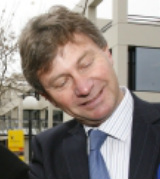
Mark Oldfield
Mark Oldfield took a risk in supporting me 2001, alienating many in his own Party. By the time the 2004 Chairmanship election came round he had been pressured to withdraw that support. He told me that he couldn’t vote for me because “I’ve been advised that one mistake was enough, a second will be fatal” (to any parliamentary ambitions).
Angus McKay, another National Party ECan stalwart (and current Ashburton Mayor) later told me over coffee in Rakaia, “Nah, his one mistake was the fatal one.”
Oldfield decided to sit out the 2005 General Election, apparently because he thought that the most likely National candidate, Stan Scorringe, would fail to unseat incumbent Labour MP Jim Sutton, but that his prospects would be much better for the 2008 election
To Oldfield’s great shock, Jo Goodhew not only defeated Scorringe for National’s nomination but also beat Sutton to become the MP. His parliamentary ambitions were in tatters. His work performance as an ECan councillor dropped away with increasing absences from meetings and only spasmodic engagement when he got to them.
He eventually recovered from his disappointment and rebuilt his standing in the Aoraki National Party, becoming Goodhew’s electorate chairman. His political hopes now rested on becoming Deputy Chairman of ECan to Alec Neill after the 2007 ECan elections, hopes that were also dashed when I was returned as Chairman.
Not long into the 2007 – 10 term of ECan, Oldfield’s commitment appeared to vanish. His body was there but his mind appeared to be elsewhere, a colleague said to me. As his greater political ambitions declined Oldfield’s public criticisms of ECan increased
As an irrigating farmer Oldfield rejected my advice that he had a conflict of interest over water costs recovery proposals.
The raising of that issue by me in early 2009 may have been the final straw.
The successful leadership coup of September 2009 was supported by all four irrigating ECan Councillors later found by the Auditor General to have breached the conflict of interest law* because they voted for general ratepayers to pay their personal farming business costs. I described it at the time as akin to mice voting to put themselves in charge of the cheese.
The leadership coup was also backed by members of the shadowy group called the ‘Mayoral Forum’ whose members successfully lobbied ECan waverers.
Their submission to the lobbying opened the way for the destruction of ECan’s democracy.
*Angus McKay, Pat Harrow, Bronwen Murray and Oldfield
Angus McKay, another National Party ECan stalwart (and current Ashburton Mayor) later told me over coffee in Rakaia, “Nah, his one mistake was the fatal one.”
Oldfield decided to sit out the 2005 General Election, apparently because he thought that the most likely National candidate, Stan Scorringe, would fail to unseat incumbent Labour MP Jim Sutton, but that his prospects would be much better for the 2008 election
To Oldfield’s great shock, Jo Goodhew not only defeated Scorringe for National’s nomination but also beat Sutton to become the MP. His parliamentary ambitions were in tatters. His work performance as an ECan councillor dropped away with increasing absences from meetings and only spasmodic engagement when he got to them.
He eventually recovered from his disappointment and rebuilt his standing in the Aoraki National Party, becoming Goodhew’s electorate chairman. His political hopes now rested on becoming Deputy Chairman of ECan to Alec Neill after the 2007 ECan elections, hopes that were also dashed when I was returned as Chairman.
Not long into the 2007 – 10 term of ECan, Oldfield’s commitment appeared to vanish. His body was there but his mind appeared to be elsewhere, a colleague said to me. As his greater political ambitions declined Oldfield’s public criticisms of ECan increased
As an irrigating farmer Oldfield rejected my advice that he had a conflict of interest over water costs recovery proposals.
The raising of that issue by me in early 2009 may have been the final straw.
The successful leadership coup of September 2009 was supported by all four irrigating ECan Councillors later found by the Auditor General to have breached the conflict of interest law* because they voted for general ratepayers to pay their personal farming business costs. I described it at the time as akin to mice voting to put themselves in charge of the cheese.
The leadership coup was also backed by members of the shadowy group called the ‘Mayoral Forum’ whose members successfully lobbied ECan waverers.
Their submission to the lobbying opened the way for the destruction of ECan’s democracy.
*Angus McKay, Pat Harrow, Bronwen Murray and Oldfield
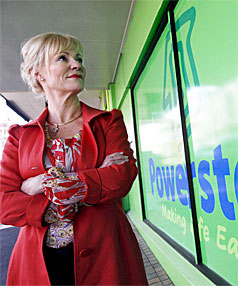
Janie Annear
Territorial Mayors and the Regional Council (ECan):
Canterbury’s mayors never seemed to accept that the Regional Council (ECan) and its elected members had a clear and separate democratic mandate, different from theirs.
They had done their best to make ECan weak on its creation in 1989 by denying it port ownership shares, and continued that pursuit subsequently, at one time even proposing that, despite the law, ECan should only be permitted to do what the districts allocated to it.
The mayors simply did not like having an over-arching, elected regulatory authority which was not their rubber stamp, one which they could not control.
This phenomenon is not unique to Canterbury.
On big picture issues, however, there was often splendid co-operation, producing some outstanding regional successes such as the Greater Christchurch Urban Development Strategy (UDS) and the Canterbury Water Management Strategy (CWMS), which is the model the Government has used to develop its much trumpeted Land & Water Forum.
The CWMS was really core ECan leadership work but in 2003, unwisely in my view, it allowed the Mayoral Forum to be the titular head of the process, while ECan provided the financial and technical underpinning. The CWMS process worked well, but ECan should have led it. ECan’s stature was diminished by its essential but background role.
The mayors all saw economic development opportunities from water for their districts and the 2007 ECan election made them worried that the 2010 local elections might produce an ECan Council which was less inclined to give their irrigators a blank cheque.
The mayors, led by Christchurch’s Bob Parker and Timaru’s Janie Annear, behaved in a duplicitous manner towards ECan.
Every Canterbury mayor, on behalf of their councils, agreed to a “no surprises” compact when they signed the Triennial Agreement, requiring them to raise any inter-council issues for discussion and resolution rather than be the subject of public disagreement. As ECan Chair, I also signed up to this agreed, civilised way of behaving towards each other.
Every Canterbury mayor* then deliberately and dishonourably broke that agreement with their fabricated complaints to Ministers without any prior discussion with ECan.
*Parker (Christchurch), Annear (Timaru), Keating (Waimakariri), Coe (Selwyn), O’Malley (Ashburton), Jackson (Hurunui), Coles (Waimate), Heays (Kaikoura), O’Neill (Mackenzie) and Familton (Waitaki).
Canterbury’s mayors never seemed to accept that the Regional Council (ECan) and its elected members had a clear and separate democratic mandate, different from theirs.
They had done their best to make ECan weak on its creation in 1989 by denying it port ownership shares, and continued that pursuit subsequently, at one time even proposing that, despite the law, ECan should only be permitted to do what the districts allocated to it.
The mayors simply did not like having an over-arching, elected regulatory authority which was not their rubber stamp, one which they could not control.
This phenomenon is not unique to Canterbury.
On big picture issues, however, there was often splendid co-operation, producing some outstanding regional successes such as the Greater Christchurch Urban Development Strategy (UDS) and the Canterbury Water Management Strategy (CWMS), which is the model the Government has used to develop its much trumpeted Land & Water Forum.
The CWMS was really core ECan leadership work but in 2003, unwisely in my view, it allowed the Mayoral Forum to be the titular head of the process, while ECan provided the financial and technical underpinning. The CWMS process worked well, but ECan should have led it. ECan’s stature was diminished by its essential but background role.
The mayors all saw economic development opportunities from water for their districts and the 2007 ECan election made them worried that the 2010 local elections might produce an ECan Council which was less inclined to give their irrigators a blank cheque.
The mayors, led by Christchurch’s Bob Parker and Timaru’s Janie Annear, behaved in a duplicitous manner towards ECan.
Every Canterbury mayor, on behalf of their councils, agreed to a “no surprises” compact when they signed the Triennial Agreement, requiring them to raise any inter-council issues for discussion and resolution rather than be the subject of public disagreement. As ECan Chair, I also signed up to this agreed, civilised way of behaving towards each other.
Every Canterbury mayor* then deliberately and dishonourably broke that agreement with their fabricated complaints to Ministers without any prior discussion with ECan.
*Parker (Christchurch), Annear (Timaru), Keating (Waimakariri), Coe (Selwyn), O’Malley (Ashburton), Jackson (Hurunui), Coles (Waimate), Heays (Kaikoura), O’Neill (Mackenzie) and Familton (Waitaki).
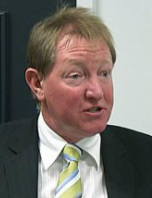
Nick Smith
Discussion would have meant that their claims might have been rebutted and the mayors couldn’t have that. So dishonour, breaking their word, carried their day.
A minority, wanted to honour their signed commitment to the “no surprises” clause and discuss matters with ECan, but the hardliners were set on abolishing the elected regional council and weren’t prepared to let niceties such as keeping their word get in the way. The moderates were whipped into line.
The Government also saw the risk of an unhelpful ECan Council post-October 2010 as a threat, in that ECan might have sought balanced environmental outcomes.
While this is actually what is supposed to be done to achieve the four statutory well-beings – social, economic, environmental and cultural - appointing Commissioners as fronts answerable to Ministers rather than the Canterbury community eliminated this risk.
While many agendas intertwined they amounted to a constructive dismissal by the Government of an elected regional authority for a central takeover of Canterbury’s major natural resource, water. It was, in short, a resource grab, a tilting of the playing field for sectoral gain against the wider community’s interests.
Personal ambitions and politics inevitably play a role in the dynamics of any organisation, whether it be a church, club, business or a council, and ECan was no exception.
In both the 2004 and 2007 Chairmanship elections I defeated Alec Neill, a former National MP. He still desperately wanted the job. So too did Jo Kane, who supported me in 2007 but who also hoped that she might soon be Chair. She appeared to many colleagues to be preening herself for the role.
While Kane was the only colleague who thought she should be Chair my opponents had noticed her interest, courted her and may have even promised her the role if she changed allegiances. Her switch of support, together with Bronwen Murray, one of the conflicted irrigator councillors, was enough to put the chairmanship in play.
Kane appears to have fallen for the oldest trick in the book (‘Of course I’ll still love you tomorrow’) and, it seems, was soon told by Neill’s backers that they wouldn’t support her in the final vote. A fury ensued from her, in which she publicly declared that she would never support Neill for the Chairmanship.
To me Kane described Neill as a liar and a snake.
Then she supported him, following mayoral and rural lobbying for leadership change. Her reward was the retention of the Deputy Chairmanship.
The result was that by late 2009 ECan’s leadership was dependent on the very people who wanted to destroy it. They provided almost no defence of the elected Council.
A minority, wanted to honour their signed commitment to the “no surprises” clause and discuss matters with ECan, but the hardliners were set on abolishing the elected regional council and weren’t prepared to let niceties such as keeping their word get in the way. The moderates were whipped into line.
The Government also saw the risk of an unhelpful ECan Council post-October 2010 as a threat, in that ECan might have sought balanced environmental outcomes.
While this is actually what is supposed to be done to achieve the four statutory well-beings – social, economic, environmental and cultural - appointing Commissioners as fronts answerable to Ministers rather than the Canterbury community eliminated this risk.
While many agendas intertwined they amounted to a constructive dismissal by the Government of an elected regional authority for a central takeover of Canterbury’s major natural resource, water. It was, in short, a resource grab, a tilting of the playing field for sectoral gain against the wider community’s interests.
Personal ambitions and politics inevitably play a role in the dynamics of any organisation, whether it be a church, club, business or a council, and ECan was no exception.
In both the 2004 and 2007 Chairmanship elections I defeated Alec Neill, a former National MP. He still desperately wanted the job. So too did Jo Kane, who supported me in 2007 but who also hoped that she might soon be Chair. She appeared to many colleagues to be preening herself for the role.
While Kane was the only colleague who thought she should be Chair my opponents had noticed her interest, courted her and may have even promised her the role if she changed allegiances. Her switch of support, together with Bronwen Murray, one of the conflicted irrigator councillors, was enough to put the chairmanship in play.
Kane appears to have fallen for the oldest trick in the book (‘Of course I’ll still love you tomorrow’) and, it seems, was soon told by Neill’s backers that they wouldn’t support her in the final vote. A fury ensued from her, in which she publicly declared that she would never support Neill for the Chairmanship.
To me Kane described Neill as a liar and a snake.
Then she supported him, following mayoral and rural lobbying for leadership change. Her reward was the retention of the Deputy Chairmanship.
The result was that by late 2009 ECan’s leadership was dependent on the very people who wanted to destroy it. They provided almost no defence of the elected Council.
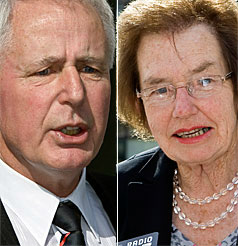
There was no public assertion by them of the high principles of democracy, of local decision-making or the centuries-old fundamental link between taxation and representation.
Worse, Neill, as outgoing Chair, publicly embraced his appointed successor and then collaborated (for a fee) with the incoming Commissioners. He and Oldfield later received Government appointments. Kane got nothing, her usefulness having apparently expired.
ECan needed a Churchill but got the appeasement of Chamberlain. It was left to the community to protest about the loss of democracy and accountability for ECan’s decisions. It still is.
The elected Environment Canterbury Council did not deserve this treatment.
It led New Zealand in key regional council functions, such as its plan for improving air quality, in public passenger transport and in the development of collaborative strategies for urban growth in Greater Christchurch and for regional water management.
Christchurch’s air is vastly cleaner today than it was in earlier decades. So impressed was the Government with ECan’s Clean Heat Project (CHP) that it modelled its own national assistance programme on it. (Gerry Brownlee was a CHP client).
The Commissioners’ management of air quality issues has been a disaster, disregarding any accountability to the community, save for bursts of publicly funded advertising.
They scrapped the Clean Heat Project after 20,000 of its intended 26,000 home heating conversions and have told ‘quake victims that they have lost their rights to replace their old solid fuel burners with new ones in their new homes. ECan is clearly not a democracy.
ECan’s management of public passenger transport (pre-earthquake) was shown by several independent studies to be the most cost-effective, competitive and efficient in Australasia.
As with air quality, the elected ECan’s record in public passenger transport was on to be envied and copied.
Central Government had to introduce special legislation to create a cohesive Auckland planning framework with one council. Canterbury did it through collaboration.
But New Zealand leadership in agreed planning strategies, better air quality, transport and other successes wasn’t enough to save the elected ECan.
The Government decided to prevent an elected ECan Council from managing Canterbury’s water, so it fabricated the case for its dismissal. It still does.
The mayors cheered from the sidelines, their councils and electors mostly ignorant of their leaders’ plotting and the consequent loss of their rights as citizens to hold their regional council decision makers to account.
Worse, Neill, as outgoing Chair, publicly embraced his appointed successor and then collaborated (for a fee) with the incoming Commissioners. He and Oldfield later received Government appointments. Kane got nothing, her usefulness having apparently expired.
ECan needed a Churchill but got the appeasement of Chamberlain. It was left to the community to protest about the loss of democracy and accountability for ECan’s decisions. It still is.
The elected Environment Canterbury Council did not deserve this treatment.
It led New Zealand in key regional council functions, such as its plan for improving air quality, in public passenger transport and in the development of collaborative strategies for urban growth in Greater Christchurch and for regional water management.
Christchurch’s air is vastly cleaner today than it was in earlier decades. So impressed was the Government with ECan’s Clean Heat Project (CHP) that it modelled its own national assistance programme on it. (Gerry Brownlee was a CHP client).
The Commissioners’ management of air quality issues has been a disaster, disregarding any accountability to the community, save for bursts of publicly funded advertising.
They scrapped the Clean Heat Project after 20,000 of its intended 26,000 home heating conversions and have told ‘quake victims that they have lost their rights to replace their old solid fuel burners with new ones in their new homes. ECan is clearly not a democracy.
ECan’s management of public passenger transport (pre-earthquake) was shown by several independent studies to be the most cost-effective, competitive and efficient in Australasia.
As with air quality, the elected ECan’s record in public passenger transport was on to be envied and copied.
Central Government had to introduce special legislation to create a cohesive Auckland planning framework with one council. Canterbury did it through collaboration.
But New Zealand leadership in agreed planning strategies, better air quality, transport and other successes wasn’t enough to save the elected ECan.
The Government decided to prevent an elected ECan Council from managing Canterbury’s water, so it fabricated the case for its dismissal. It still does.
The mayors cheered from the sidelines, their councils and electors mostly ignorant of their leaders’ plotting and the consequent loss of their rights as citizens to hold their regional council decision makers to account.
ECan was a functional Council with many high calibre elected members. It was fully discharging its duties under its legislation, including the preparation of a massive plan for managing Canterbury’s water. It led New Zealand in many of its core activities.
The Government’s actions in removing ECan’s elected members shames New Zealand’s proud democratic history. The disgrace continues, for now.
Should local democracy be a matter of such convenience, something for casual dismissal if Wellington and/or some local leaders don’t like the prospects of regional democratic outcomes?
Surely not, yet that is what has happened, now made worse by the completely implausible and much derided ‘reasoning’ of Ministers behind the extension of the ECan dictatorship. It gets worse as fresh information finds its way into the public domain.
Democracy should always be the fundamental underpinning of the relationship between the governors and the governed, providing the accountability for those who spend the taxes to those who pay them. This is not the case in Canterbury. The above explains how and why we arrived at this point.
The Government’s actions in removing ECan’s elected members shames New Zealand’s proud democratic history. The disgrace continues, for now.
Should local democracy be a matter of such convenience, something for casual dismissal if Wellington and/or some local leaders don’t like the prospects of regional democratic outcomes?
Surely not, yet that is what has happened, now made worse by the completely implausible and much derided ‘reasoning’ of Ministers behind the extension of the ECan dictatorship. It gets worse as fresh information finds its way into the public domain.
Democracy should always be the fundamental underpinning of the relationship between the governors and the governed, providing the accountability for those who spend the taxes to those who pay them. This is not the case in Canterbury. The above explains how and why we arrived at this point.
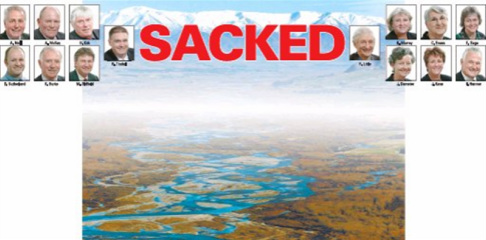
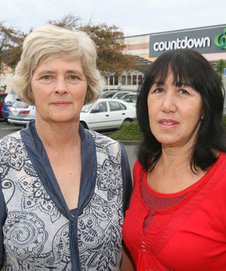
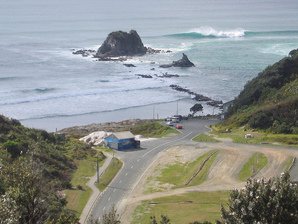
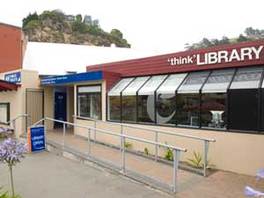
 RSS Feed
RSS Feed